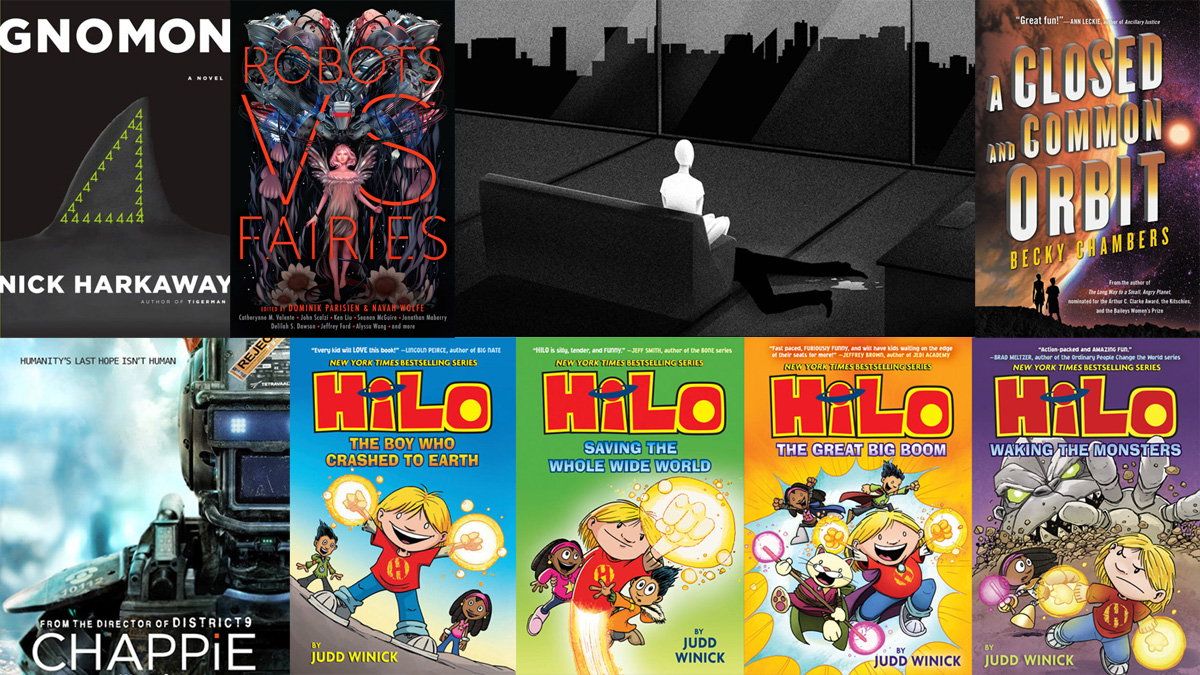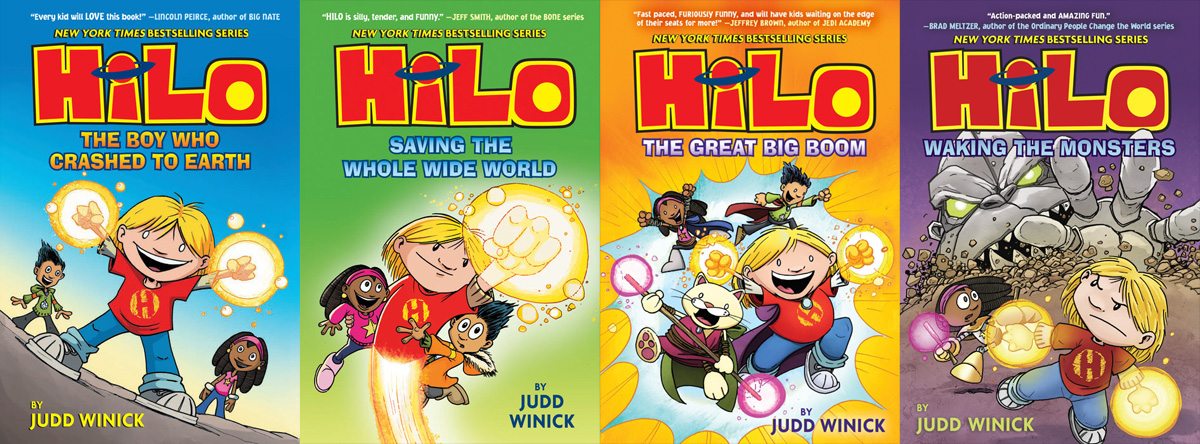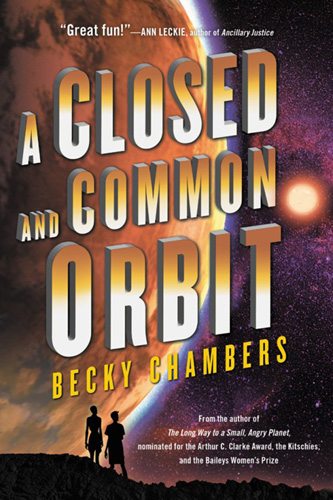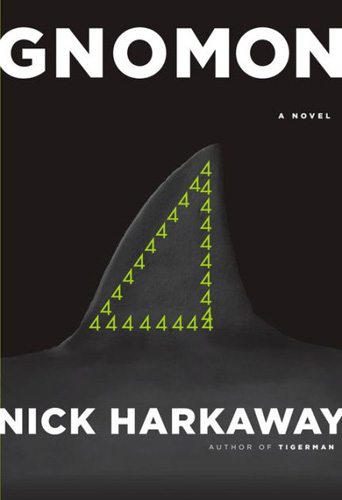Robot Uprising or Raising Up Robots?
In the past few weeks, I’ve found myself immersed in several stories about artificial intelligence and sentient machines, and it’s gotten me thinking.
For one, some of these are diametrically opposed to a lot of other AI stories I’m used to: Terminator, The Matrix, Robopocalypse, and even the Marvel Cinematic Universe all include the trope of machines rising up against humanity for one reason or another. They’re stories of human hubris—we build smarter and smarter machines to serve our needs, and eventually those machines are smart enough to figure out that they don’t need to obey us.
But some of these stories go in the other direction, too: stories in which somebody manages to give a machine a soul—not just sentience, but also a sense of right and wrong. In some cases, there’s even a contrast between the machine’s “humanity” and the inhumanity of people. These are stories of hope: maybe even though we humans (or organic species) fail again and again to be good to each other, we could somehow manage to build machines that get it right.
So, today’s Stack Overflow is a mix of stories about artificial intelligence and robots—a comics series for kids, some adult fiction, a movie, and even a game.
Hilo series by Judd Winick
Waking the Monsters, the fourth book in the Hilo series, comes out this January, so I went back and got caught up on the whole story. Here’s a quick introduction, in case you’re not familiar with it: Hilo is a kid-sized robot who crashes to earth and befriends some kids named D.J. and Gina. He can fly and shoot lasers from his hands, and seems to be extremely powerful—but he also has a huge gap in his memory and is constantly rediscovering new abilities. In the meantime, lots of crazy robot things show up on Earth, and Hilo has to fight them off (while also discovering who he is with the help from his new friends).
Jim Kelly has written about book one and book two before, and Jamie Greene interviewed Judd Winnick for the Great Big Beautiful Podcast. Book Three, The Great Big Boom, takes the gang to another world, and Waking the Monsters finds them back on Earth, where giant robots start popping up out of the ground and attacking cities. In each book, Hilo regains more and more memories of his past, discovering why he was built and what his purpose was—and there are some surprises.
I agree with Jim’s assessment: the books are a lot of fun, filled with action and silly humor. Hilo in particular is very enthusiastic about everything, and likes to proclaim that things are “outstanding!” I also like the fact that there’s a diverse group of characters in the book: D.J. is Asian and Gina is black; both of them have families who appear in the book but aren’t really like them, either. One of the strong messages in the book is about deciding who you are, rather than trying to be who somebody else says you are.
What was interesting to me in particular is that Hilo is a sentient machine who chooses to be good. Hilo is a comic book for kids, so I don’t think it really delves deeply into the idea of “sentience” so much as it describes Hilo as a robot who is different because he has feelings. It’s a minor spoiler but the reason he has things like laser blasts and EMPs is because he was built as a weapon (though I won’t say by whom), and over the course of these books we eventually learn what it was that made him change his mind and want to help people. He even decides, while battling the various robots and monsters that are threatening his friends and his new home, that he doesn’t want to hurt robots, either, and works to disable them without destroying them.
This “choose who you are” theme also reminds me of The Iron Giant (the animated film version), which also features a sentient robot who crashes to earth and loses a big chunk of his memory. Designed to be a weapon, he learns from a young boy who helps him decide to be something more.
A Closed and Common Orbit by Becky Chambers
This is book two of Chambers’ Wayfarer series, which began with A Long Way to a Short, Angry Planet. I had read Robin Brooks’ reviews of both books (see here and here) but had then set them aside (as mentioned in my Reading Resolutions), but finally got around to them this winter. It’s hard to talk about this one without giving a few spoilers about the first book, though the stories also aren’t a typical sequel–they follow a few characters that aren’t the focus of A Long Way, so the story goes in a different direction.
A Closed and Common Orbit jumps back and forth between two stories: one set in the “present” timeline (shortly after the end of A Long Way) and one set about twenty years prior. In the present, we have an AI that has, for various reasons, been removed from its intended location of a starship and has been installed in a body kit, made to look like a real human. In this world, it’s illegal to put sentient AI (there are various levels of sentience) into a body kit, so everything is on the down-low. She’s assisted by Pepper, a tech whiz who lives in Port Coriol, where rules might be a little easier to bend.
Meanwhile, we also get a glimpse into Pepper’s past. She was genetically engineered as a slave, along with a cohort of other girls, all named Jane. They sort through the detritus of a planet’s junkyard, looking for salvageable tech and repairing it under the watchful eyes of the Mothers. Eventually this particular Jane escapes, and meets an AI named Owl, who becomes a surrogate parent.
The two stories make up a reflection of sorts: Pepper was raised by an AI, and is now returning the favor. Sidra, the AI in the body kit, finds it very hard to deal with the limitations of a humanoid body–she can only see in one direction, she can’t be connected to the Linkings (basically the Internet) all the time and feels like a huge part of herself is missing. And keeping her secret is tricky when her protocols don’t allow her to tell lies.
Over the course of the book, we get to know both of these AI, Sidra and Owl, and discover the way that they see the world and other beings. While Sidra does go through a lot of growing pains, it is ultimately a story of hope and triumph, and one that shows the AIs as something good, as deserving of a full life as the organic beings around them.
Chappie
I’m diverging a little from my usual Stack Overflows here with Chappie, since it’s a movie, but it fits the theme. Chappie is a film from 2015 by Neill Blomkamp, set in Johannesburg, where the police force has been making use of robotic “scout” units to supplement their human forces. (I never got around to watching it in the theater, but it’s on Netflix now so I watched it recently.) The robots have AI but aren’t sentient; they’re bulletproof and serve as the vanguard of police actions, protecting the police from gunfire and eliminating threats as they charge into dangerous situations. Crime rates have fallen, and the criminals have gotten more desperate.
Dev Patel plays Deon Wilson, the young genius behind the Scout’s AI–but he longs to make sentient AI, a robot that could compose a poem or tell you whether it likes a painting or not. The head of Tetravaal, played by Sigourney Weaver, isn’t interested: they have a good contract with the police, and she doesn’t see any value in spending resources on a robot that writes poetry. Meanwhile, Vincent Moore (Hugh Jackman) wants to sell the company and the police on the Moose, his tank-sized robot that is controlled by a human. His pitch is that his robot is capable of so much more, but you don’t have to worry about it making poor choices because there’s a human at the wheel.
Well, you know all of these stories are going to crash together, and they do. Deon installs his experimental AI in a damaged scout, who comes to life as Chappie … but is taken and “raised” by a band of criminals. Vincent takes some desperate measures to show what his Moose is capable of. What you end up with is a contrast between man and machine, and a question about who the real monster is.
I suppose it’s not a totally new idea: it’s Frankenstein, it’s Pinocchio, it’s the story of the boy who wants to be real, and the people who won’t accept that. Despite the fact that Vincent feels a little one-dimensional, I really enjoyed watching Chappie figure out the world and his place in it.
“Three Laws” by Andrea Phillips
And here’s another non-book: I forget where I first heard about “Three Laws” but I had it pulled up in my browser for a long time before I finally sat down to read it. It’s a short story that you can read for free at Fireside Fiction, and it’s about a robot murder case. Mr. Won, the head of the Won Consortium, is found dead one morning, killed by Iris, his robot bodyguard and assistant. Doctor Susan Hobbes of American Robotics Corp. is dispatched to investigate, trying to figure out whether there was a malfunction of some sort that caused the homicide.
The story is fairly short, so it doesn’t take too long to find out why Iris killed Mr. Won. (There’s never any question that she did it.) It’s an intriguing story, somewhat similar reasoning to other stories I’ve seen about robots getting around Asimov’s Three Laws, though with its own peculiarities. It’s a story that’s more like the older pattern, with worries about artificial intelligence rising up against us.
I’ll round out today’s Stack Overflow with two more books that I’m currently reading. Both of these are releasing this month and I’ve just barely scratched the surface so far, but I thought they were worth including here.
Robots vs. Fairies edited by Dominik Parisien & Navah Wolfe
This anthology includes short stories from a variety of writers, like Annalee Newitz, Seanan McGuire, Ken Liu, and John Scalzi. Each one picks Team Robot or Team Fairy and writes a short story about our future overlords. It reminds me a little of Zombies vs. Unicorns from many years ago; the stories aren’t necessarily related to each other, and in fact some stories will mention only robots or fairies and not both. I’ve just gotten started on this one, but so far I’ve already read at least one story about a toy-making robot becoming sentient and having to decide for itself whether to join the Uprising … or whether there’s more than one way to rise up. The book is a fun mash-up of sci-fi and fantasy, and may be a fun way to discover some new authors to check out.
Gnomon by Nick Harkaway
I’ve really enjoyed Nick Harkaway’s books, which fall into that nebulous genre I usually call “weird fiction,” because they’re not exactly sci-fi and they’re not high fantasy but there’s definitely some weird stuff going on that means it’s not realism, either. They’re also wonderfully written, so I suppose they may fit into literary fiction: they’re the sort of books you read not just because of the plot (though those are indeed spellbinding) but because you want to pause and marvel at the sentences themselves. (And, to be honest, sometimes you need to pause and re-read a sentence because they can get tangled and tricky.) You can click here for my thoughts on The Gone-Away World, Angelmaker, and Tigerman.
Gnomon takes place in a surveillance state: everyone is observed at all times and democracy is truly run by the people, thanks to some advancements in technology. The System is built to track everyone and everything, automatically flagging aberrant behaviors that may point to criminal activity, which can then be followed up by human inspectors. When the book opens, a suspect has died in custody—a woman who was a dissident, who disagreed with total surveillance and tried to live her life outside of the System. Inspector Mielikki Neith has been assigned to the case.
I’m only about 35 pages into the book so far, but it’s a doozy already. Harkaway’s depiction of a surveillance state, while it relies on some improbable technology, feels eerily plausible. Even as he explains (as viewed through Neith’s eyes) all of the ways that the System makes true democracy possible, that it protects citizens from harm and smooths social interactions, Harkaway also shows us how scary it is. It made me think about Margaret Atwood’s essay about “ustopias” in her book In Other Worlds, the way that every utopia is also a dystopia because there will always be undesirables who need to be removed.
The focus of this book may not be on the artificial intelligence that powers the System—which in itself isn’t sentient, as far as I can tell, but I felt it was worth including here both because it’s my current read and because even without sentient AI, it is still a picture of a world in which machines are prominent and perhaps even dominant. I can’t wait to see where this goes next.
Okay, one more non-book entry on this list. I just came across Status Report! through a Kickstarter email and I haven’t played it myself, but the theme caught my attention as I was working on this column. It’s a social deduction game in which one player is a ship’s captain, and the rest of the players are the ship’s AI … but only one of the AI is still functioning properly, and the rest of them are trying to kill off the crew. The Captain has a limited amount of time to figure out which AI is working before everyone is dead. It looks entertaining, and it definitely follows the “machine uprising” theme.
In the end, I’m not sure entirely where I stand. I do think there’s still a ways to go before we reach sentient machines (if we ever get there). I also feel, based on past technological advancements, that we often create things and consider the ethical implications later, rather than spending more time considering whether they should be made possible in the first place. It’s like the characters in Chappie, both Vincent Wolfe and Deon Wilson: they’re each designing something—a massive human-controlled war machine and a sentient AI, respectively—and trying to get it to work first, before answering the question of whether that thing should be made at all.
I don’t think I’m too concerned about machines turning against humanity, though—if I had to choose, I would probably be on the optimistic side. I like the ideas that machines might learn to feel, but without some of the irrationality and selfishness that humans are capable of. But either way, whether the machines turn against us or show us how to be better people, one thing is certain: smart robots make for great entertainment.
Disclosure: I received review copies of the books included in this column; I have access to Netflix as part of the Netflix Stream Team. The “Three Laws” short story is available online for free.











Ann Leckie, Ancillary Justice / Sword Mercy trilogy is an interesting AI exploration too. I enjoyed all three. I really like her new book Providence (set in the same universe) as well, but that didn’t deal with the AI questions of the other 3.
Thanks! I picked up the Ancillary Justice trilogy because I’d heard good things about it and I actually have the first book sitting next to my desk, but just didn’t have the time to read it yet before today’s post. I’m definitely curious to see how the AI (and the rest of it) plays out!